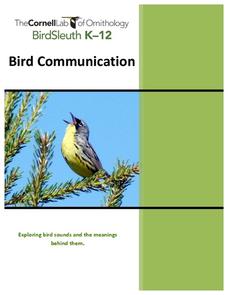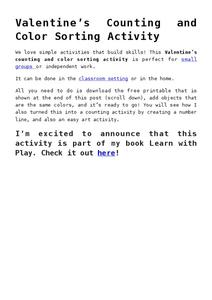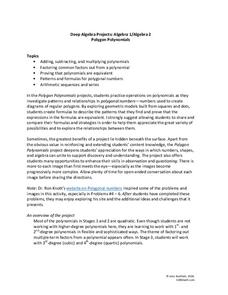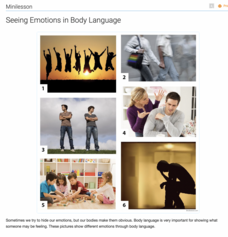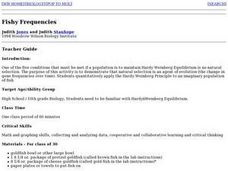LABScI
The Rutherford Atomic Model: Hidden Obstacles
Historically, scientists had to be creative to study subatomic structure. Scholars step into their minds to recreate the procedure Rutherford used to create his atomic model. Learners identify the creative efforts of early scientists...
Massachusetts Institute of Technology
List of Chemicals in Space
What is space made of? It turns out that there are many compounds found in space! The 10th lesson of a science series provides a list of the compounds found in space and asks young scholars to research the characteristics of these...
Cornell Lab of Ornithology
Bird Communication
Sing for your dinner! Investigate the purpose of bird songs and strategies birds use to communicate. Through the lessons, individuals learn how to recognize different types of bird communication as well as hypothesize the purpose of...
Cornell University
Building Spectroscope
Given specific materials, scholars follow a set of instructions to build and calibrate their very own spectroscopes. After construction, they test the scope for accuracy and make modifications where necessary.
Lemos and Crane
Homophobic Bullying
Discuss homophobia and bullying with a collaborative and supportive lesson. Class members engage in a series of activities focused on the ways bullies use physical, verbal, mental and emotional, sexual, and cyber tactics to spread...
Teaching 2 and 3 Year Olds
Valentine’s Counting and Color Sorting Activity
Reinforce the concept of one-to-one correspondence with a Valentine's Day-themed counting and color sorting activity. Scholars sort foam hearts by color—red, orange, yellow, green, blue, and purple—then count and place them on a number...
National Research Center for Career and Technical Education
Break-Even Point
How do companies determine the prices of their products? Marketing maestros discover the concepts of cost and break-even point through discussion, independent practice, and a collaborative assessment. The career and technology-oriented...
Administrative Office of the US Courts
Nomination Process
"I do solemnly swear that I will support and defend the Constitution of the United States..." Scholars investigate the nomination process of Supreme Court justices when assuming office. Through examination of primary and secondary...
The Holler
Conflict Resolution
Does your class understand the importance of peaceful conflict resolution? Middle schoolers share conflict stories, then collaborate to resolve simulated conflicts during an engaging lesson plan. The teacher's guide contains...
Center for Instruction, Technology, & Innovation
Did African American Lives Improve After Slavery?
The Civil War made slavery illegal, but all ex-slaves were not totally free. Scholars visit eight different classroom stations to uncover life during the Reconstruction Era in America. Groups discover items such as Black Codes, 13th,...
New York State Education Department
TASC Transition Curriculum: Workshop 7
Designed specifically for math instructors, the seventh workshop of a 15-part series allows time to explore Webb's DOK, ponder open-ended questions, and create lessons to apply what is learned. Teachers craft high-quality math problems...
5280 Math
Polygon Polynomials
Patterns in polygons lead to patterns in polynomials. Presented with a series of polygons, individuals create polynomial expressions to represent their patterns. The algebra project consists of nine problems that incorporate polynomial...
Thoughtful Learning
Seeing Emotions in Body Language
Scholars test their skills of reading body language with a collaborative learning experience that focuses on showing and identifying emotions. Pairs take turns acting out an emotion, one uses body language while the other guesses what...
University of Florida
A Walk in the Woods
Take class members on a field trip to the forest without leaving the classroom. Scholars learn content-related vocabulary and factors affecting forest health with class discussions and during a presentation. Scientists combine forestry...
Curated OER
Stick To The Topic
Second graders engage in a instructional activity that is concerned with the increase of writing conventions. The teacher models the writing process for the students. The students work with the teacher to create a shared writing piece...
Curated OER
Building Successful Parent-Teacher Rapport
Students discuss the importance of having a strong parent-teacher relationship. They brainstorm ways to build and strengthen the relationship with their child's teacher. Groups of students role play the different methods of...
Curated OER
In your Science! - Merging Art and Science
Ninth graders reflect on what they have learned throughout the unit. In this Science instructional activity, 9th graders demonstrate how working together can produce an informative useful project.
Curated OER
Natural Collaboration: Building With the Five Elements of Art
Students assemble found natural objects into an artistic arrangement. They photograph their arrangement and Photoshop to enhance their artwork.
Visa
A Way to Wealth: Understanding Interest and Investments
Money motivates! Help young bankers understand how math plays a part in investing. Give learners math practice while instilling real-world financial literacy skills.
Curated OER
What's The Story?
Groups of learners get together and are given copies of the state quarter reverses from the 2002 US Mint issue. Each pupil makes up a story that's based on the scene that appears on the reverse side of the quarter. The goal is for all...
Curated OER
Volley Tennis
A combination of Tennis and Volleyball, this activity will help with court positioning and the volley shot in tennis. They practice volleying the ball and working together in teams.
Curated OER
Wish You Were Here! - Collaborative Literacy Project
Students explore videos, software and print resources to investigate the concept of community. Students write poems about their town and illustrate them for a collaborative literacy project.
Curated OER
Working Together As a Team
Young scholars examine the need for rules to keep order at home, in school, in communities, and in the country using trade books and teamwork activities. They work in cooperative groups to define a positive learning community by writing...
Curated OER
Fishy Frequencies
Tenth graders demonstrate that natural selection is an agent of evolution. They quantitatively apply the Hardy-Weinberg Principle to an imaginary population of fish. They utilize math and graphing skills, collecting and analyzing data,...




